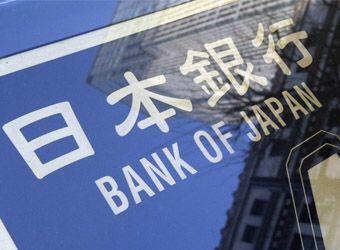Big manufacturers have more confidence in Japan’s business conditions than they have had for a decade as global demand adds momentum to economic recovery, a closely watched central bank survey read Monday.
The upbeat data supports Bank of Japan policymakers’ hopes that a sustained economic recovery will boost wages and household spending, helping to accelerate inflation towards the central bank’s ambitious 2 percent target.
The Bank of Japan “tankan” survey could also help premier Shinzo Abe as he tries to convince voters in an Oct. 22 election that his “Abenomics” stimulus policies have improved their livelihoods, analysts say.
“The results were stronger than expected. Big manufacturers’ sentiment was probably driven by a weaker yen and hefty corporate profits,” said Yuichiro Nagai, economist at Barclays Securities Japan.
Nagai said companies were somewhat cautious on the outlook, but there was room for improvement.
That was because the expected yen rate was set higher than the current rate, which could help companies raise their profits if the actual rate ended up lower than the expected rate, he added.
The BOJ’s quarterly “tankan” survey showed the headline index for big manufacturers’ sentiment stood at plus 22 in September, handily exceeding a median market forecast of plus 18 to mark the highest level since September 2007.
It was higher than plus 17 seen in the previous survey in June, posting a fourth straight quarter of improvement, the tankan survey showed on Monday.
The big non-manufacturers’ sentiment index stood at plus 23, unchanged from June and matching a median market forecast, the survey showed.
Big firms expect to increase capital expenditure by 7.7 percent in the current fiscal year ending in March 2018, compared with a median market forecast for a 8.3 percent gain.
Both big manufacturers and non-manufacturers expect business conditions to deteriorate in the next three months, according to the survey, reflecting their concerns about uncertain outlook.
Weak prices
The survey will be among data the BOJ board will scrutinize when it issues fresh long-term economic and price forecasts at a rate review on Oct. 30-31.
“The tankan results were in line with or even stronger than the BOJ’s scenario but the price trend remains weak. Given a gap between an improving economy and sluggish prices, the BOJ will likely cut its price projections in the outlook report,” Nagai added.
Japan’s economy expanded at an annualized 2.5 percent in the second quarter on robust consumer and corporate spending, heightening hopes of a sustained recovery.
While slowing down from the second quarter’s exceptionally fast growth, the economy is likely to have expanded 1.1 percent in the July-September period, according to a Reuters poll.
But price and wage growth remain weak with firms still wary of passing more of their profits to employees, forcing the BOJ to push back the timing for reaching its price target six times since deploying a massive stimulus program in 2013.
The BOJ now expects inflation to hit 2 percent in the fiscal year ending in March 2020, arguing that a tightening job market and solid economic growth will gradually push up prices.
The tankan’s sentiment indexes are derived by subtracting the number of respondents who say conditions are poor from those who say they are good. A positive reading means optimists outnumber pessimists.
Source: Reuters



